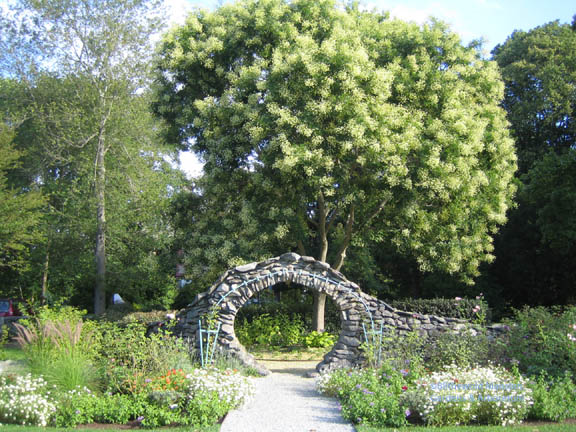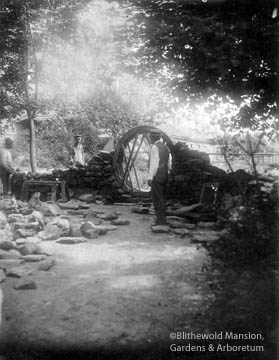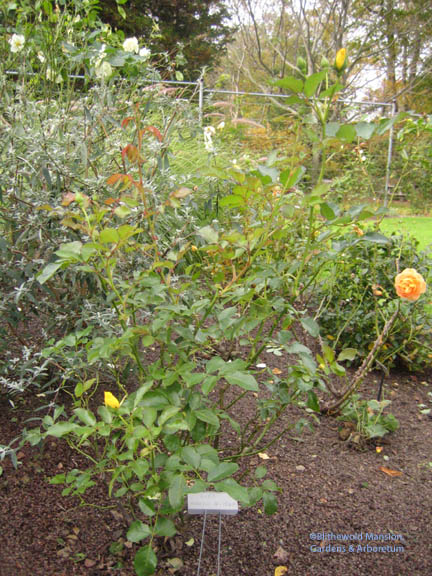Rose Garden consultation
 I could use some help. Every year about this time I start thinking about getting new roses for the Rose Garden and every year about this time I go certifiably nutty trying to read between the lines of rose catalog descriptions. My kingdom for a disease resistant rose! Some of you already know that we don’t spray the Rose Garden with any kind of fungicide or pesticide – we clean up dead and disease-y leaves and we handpick beetles (though fingers crossed that the milky spore disease that Dan applied a year and a half ago makes a noticeable difference this year). And we’ve begun to interplant the garden with a mixed up mix of shrubs, perennials and annuals so that there’s other stuff going on midsummer besides black spot and beetles.
I could use some help. Every year about this time I start thinking about getting new roses for the Rose Garden and every year about this time I go certifiably nutty trying to read between the lines of rose catalog descriptions. My kingdom for a disease resistant rose! Some of you already know that we don’t spray the Rose Garden with any kind of fungicide or pesticide – we clean up dead and disease-y leaves and we handpick beetles (though fingers crossed that the milky spore disease that Dan applied a year and a half ago makes a noticeable difference this year). And we’ve begun to interplant the garden with a mixed up mix of shrubs, perennials and annuals so that there’s other stuff going on midsummer besides black spot and beetles.
 Traditionally the Rose Garden was a mixed garden heavy on roses. Word is that the family didn’t spend much time in this garden although they had a beautiful moongate built in 1913 and had tall fences erected (similiar to what surrounded their tennis courts) for the climbers to grow on. And Estelle Clements (Bessie’s live-in companion, friend and helper) mentioned in her journal when her favorite roses were in bloom.
Traditionally the Rose Garden was a mixed garden heavy on roses. Word is that the family didn’t spend much time in this garden although they had a beautiful moongate built in 1913 and had tall fences erected (similiar to what surrounded their tennis courts) for the climbers to grow on. And Estelle Clements (Bessie’s live-in companion, friend and helper) mentioned in her journal when her favorite roses were in bloom.
June 10, 1922 Most of the standard roses are in bloom and the ramblers are beginning to come out. Kaiserin Augusta Victoria, Waltham Rambler, Goldfinch, Gardenia are flowering and Thousand Beauties is beginning to come out.
(I love the archives!) But the Rose Garden might have been enjoyed even more by the family’s staff. Situated next to the carriage house and barn (where the family wouldn’t have had much occasion to go), and surrounded in the summer by a thorny fence and stone walls, this private eden would have been the ideal place for a smoke break.
Now it’s our entrance garden – a visitor’s first peek at Blithewold’s 33 acres and we desperately want to make a good impression. –Very difficult to do that with unsprayed roses along midsummer!  So we asked one of our favorite (retired) garden designers, Ginny P. to give us her thoughts and I’d like some of yours too. I really want to know if any of you have favorite roses that you don’t treat like roses – do you have any that look good even without weekly hosedown of chemistry? I know you do!…
So we asked one of our favorite (retired) garden designers, Ginny P. to give us her thoughts and I’d like some of yours too. I really want to know if any of you have favorite roses that you don’t treat like roses – do you have any that look good even without weekly hosedown of chemistry? I know you do!…  One of the Florabundas (our Thursday Rose Garden volunteers) gave us the most perfect rose last year – and just what I’m looking for more of. ‘Morning Has Broken’ is a beautiful butter yellow non-stopper with a sweet fragrance and best of all – not a spot of fungus amongus all summer! And we had it jammed in with annuals probably stifled and it just never stopped or dropped. We also have the ‘Knock Outs’. They don’t knock my socks off but they do seem to stay healthy. Can you recommend any others before I place my order for a boatload more of ‘Morning ..’?
One of the Florabundas (our Thursday Rose Garden volunteers) gave us the most perfect rose last year – and just what I’m looking for more of. ‘Morning Has Broken’ is a beautiful butter yellow non-stopper with a sweet fragrance and best of all – not a spot of fungus amongus all summer! And we had it jammed in with annuals probably stifled and it just never stopped or dropped. We also have the ‘Knock Outs’. They don’t knock my socks off but they do seem to stay healthy. Can you recommend any others before I place my order for a boatload more of ‘Morning ..’?
I checked the All American Rose Selections website for recent winners. Winners are chosen based on a list of characteristics including disease resistance. On the page describing their test gardens I found this: “The rose varities in these trials receive only as much care as your average home gardener would be likely to give. In fact, AARS members recently voted to remove fungicidal spraying from the testing process, to ensure that our AARS Winners are natural top performers.” And I have to admit to being irked. Call me naive but I didn’t realize testers were allowed to spray the roses. Just how exactly can they tell if a rose is disease resistant if they’re spraying it? And when exactly did the fungicide ban go into effect? I couldn’t find that information anywhere on their website and so far no one has gotten back to me. I’ll happily try more AARS winners if I know they won the award fair-n-square. Anybody know the scoop?
